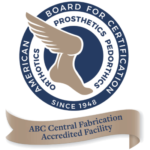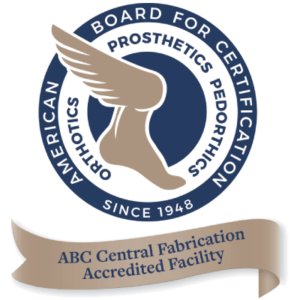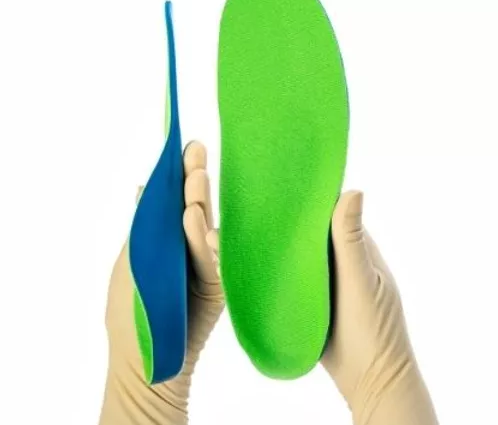Is Your Prosthetic or Orthotic Device the Correct Size?
Around 30 million people worldwide currently require prosthetic and orthotic devices. In the United States, 2.1 million people are already using assistive devices like prosthetic legs or knee-ankle-foot orthoses.
With this significant degree of prosthetic and orthotic need, it is essential that patients using such devices feel optimal comfort and gain the most benefit. Thankfully, with the central fabrication leader, Grace Prosthetic Fabrication, you can help your patients overcome the challenge of finding a suitable device and help them cope with their condition.
Therefore, getting the right fit and size is crucial. But why should the prosthetic or orthotic have the appropriate size?
Importance of Getting the Right Prosthetic or Orthotic Size
The size of a prosthetic or orthotic device is vital in providing their intended function. This is something our team cannot emphasize more.
But even though the right prosthetic size is always emphasized, many still fail to get it right for their patients, defeating its purpose. Patients having unique anatomical and pathological characteristics doesn’t make the process easier.
So, why is it essential to get the right prosthetic and orthotic size?
● A prosthetic or orthotic device’s effectiveness greatly depends on its quality, size, and fit. If these aspects are not correct, their function and performance become compromised. As a result, the patient’s movement and way of life are also negatively affected.
● Ill-fitting devices also cause various problems and complications, including pain, ulcers, and increased risk for falls and injuries. In other words, if your patients use a prosthetic or orthotic that is the wrong size, their symptoms will only intensify, and they can suffer from new problems instead of finding relief.
● Getting the right fitting of prosthetics or orthotics for your patients is essential for them to gain the promised benefits. However, you won’t meet your expectations with a device of the wrong size. Instead, your patients will get the opposite effects, which add to their discomfort and make them feel stressed and frustrated.
Getting the correct size prosthetics or orthotics is the key for patients to get the most benefits from it. Therefore, taking their measurements correctly is vital.
What You Need to Know About Prosthetic or Orthotic Sizes
Prosthetic and orthotic devices don’t come in one size that fits all. Since every patient is different, they have unique needs that only custom-made devices can provide. These devices are the best options your patients have for gaining the most advantages and therapeutic effects.
Here are some things that you need to know when it comes to prosthetic and orthotic sizes.
● It’s possible for patients not to immediately tell just how the prosthetic or orthotic device fits. It may take time before they can say whether the device size is correct. So, to be able to tell faster, they must wear the device(s) more frequently.
● Factors like temperature, water retention, weight fluctuations, etc. affect the size of the prosthetics. These cause minor changes. Hence, several fitting sessions are necessary before the prosthetic device is released.
● The fitting and measurement-taking process takes a while. Therefore, you need to return to the central fabrication company for the proper fitting and adjustments, a situation especially true for new patients.
● Patients must know that the socket (the part attached to the residual limb) wears out over time. When this happens, the fit of the prosthesis changes, and it will soon feel uncomfortable. When this happens, adjustments need to be made, so a visit to the prosthetist is necessary.
So, how do you know if the prosthetic or orthotic device is the right size?
As a basis, prosthetic fabrication should comply with the following measurements:
1. The fit needs to be snug. The size needs to be adjusted if the device easily moves or pulls away from the limb.
2. For orthotic size, shoe size is a determining factor. While patients’ shoes are usually one size larger, the actual size is the one followed. If it’s bigger, the orthotic arch can irritate the sesamoid apparatus.
3. Shoe size, size guide, and manual measurements are some bases for foot prosthesis and orthosis. The final products should not be far from the said measurements.
Prosthetic and Orthotic Central Fabrication from Grace Prosthetics
Different criteria determine the size of the prosthetic or orthotic. But undoubtedly, size is one of the most critical aspects.
Whether it’s a prosthetic device or a type of orthosis that your patients need, it’s crucial to work closely with a leader in central fabrication so the correct fit is achieved. Then, the benefits and improvement of life of your patients follow.
If you need an expert to get the exact measurements of your patients and produce the best device, you can call Grace Prosthetic Fabrication at 1-800-940-5347 for a free consultation.






